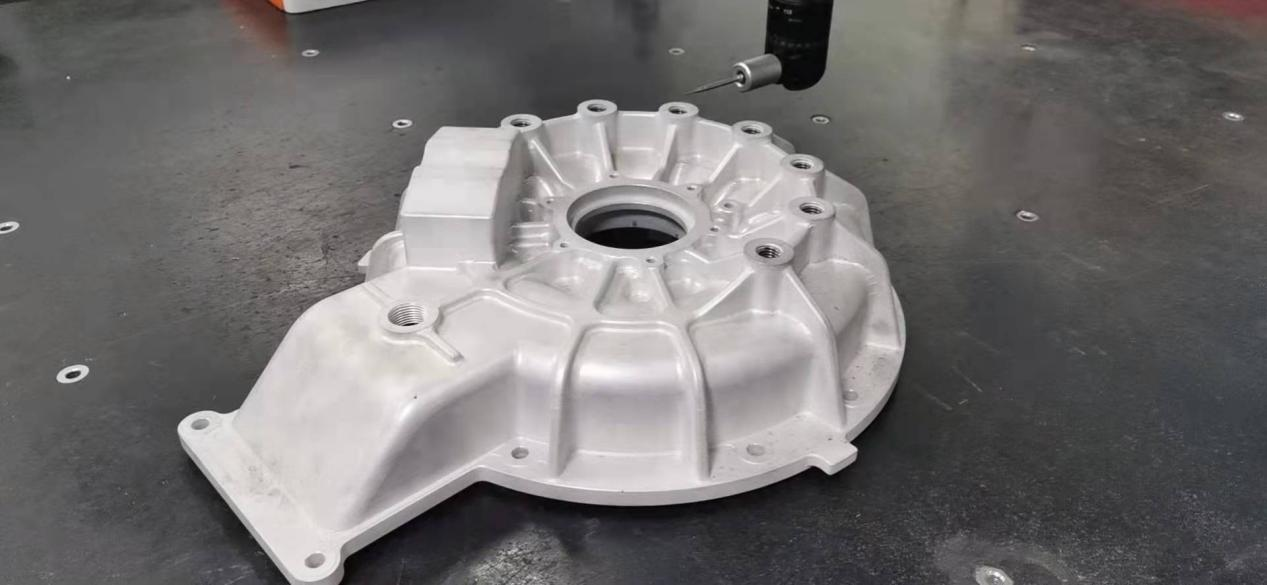Features of Energy Vehicle Motor Casing
2024-05-21
The motor casing in an electric vehicle (EV) plays a crucial role in housing and protecting the electric motor, which is the primary power source for propulsion. This casing serves several important functions in ensuring the efficient operation and safety of the electric motor. Here's an overview of the features, materials, and functions of the motor casing in an energy vehicle:
Features of Energy Vehicle Motor Casing:
1. Enclosure:
- The casing provides an enclosed space to house the electric motor and its internal components, protecting them from external elements, debris, and contaminants.
2. Mounting Points:
- Includes mounting points or brackets for securely attaching the motor casing to the vehicle's chassis or frame, ensuring stability and structural integrity.
3. Cooling Channels:
- Some motor casings feature integrated cooling channels or ducts to facilitate the circulation of coolant or air, dissipating heat generated during motor operation and maintaining optimal temperature levels.
4. Sealing:
- Ensures a tight seal to prevent moisture ingress, dust infiltration, and potential water damage to the electric motor and its electronics.
5. Insulation:
- Provides thermal and electrical insulation to protect the motor windings and internal components from overheating and electrical faults.
6. Access Panels:
- May include access panels or service ports for maintenance, inspection, and repair of the electric motor and associated components.
Materials Used in Energy Vehicle Motor Casings:
1. Aluminum:
- Lightweight and corrosion-resistant material commonly used in motor casings for electric vehicles.
- Offers good thermal conductivity for efficient heat dissipation and structural strength for durability.
2. Magnesium Alloy:
- Provides high strength-to-weight ratio and excellent thermal conductivity, making it suitable for lightweight motor casings.
3. Steel:
- Offers high strength and durability, often used in motor casings for heavy-duty or high-performance electric vehicles.
4. Composite Materials:
- Carbon fiber-reinforced polymers (CFRP) and other composite materials may be used to achieve a balance of strength, lightweight design, and thermal properties.
5. Plastics:
- Thermoplastics or thermoset plastics may be utilized for motor casings in some applications, offering cost-effectiveness and design flexibility.
Functions of Energy Vehicle Motor Casing:
1. Protection:
- Shields the electric motor and its internal components from environmental hazards, including moisture, dust, debris, and impacts, ensuring reliable operation and longevity.
2. Heat Dissipation:
- Facilitates efficient heat dissipation from the electric motor, preventing overheating and maintaining optimal operating temperatures for performance and longevity.
3. Structural Integrity:
- Provides structural support and rigidity to the electric motor assembly, contributing to the overall stability and safety of the vehicle.
4. Electromagnetic Interference (EMI) Shielding:
- Helps mitigate electromagnetic interference (EMI) from the electric motor, minimizing interference with vehicle electronics and communication systems.
5. Noise Reduction:
- Dampens vibration and noise generated by the electric motor, contributing to a quieter and more comfortable driving experience for occupants.
6. Integration:
- Enables integration with other vehicle systems, such as the powertrain, battery pack, cooling system, and chassis components, for seamless operation and compatibility.
Considerations for Energy Vehicle Motor Casing Design:
1. Thermal Management:
- Optimize the design for efficient heat dissipation and thermal management, considering factors such as cooling channels, materials, and thermal insulation.
2. Weight Optimization:
- Balance the need for structural integrity and durability with the goal of minimizing weight to improve vehicle efficiency and range.
3. Manufacturability:
- Design for ease of manufacturing and assembly, considering factors such as tooling, molding processes, and component integration.
4. Environmental Protection:
- Ensure effective sealing and protection against moisture, dust, and other environmental contaminants to maintain reliability and longevity in diverse operating conditions.
5. Serviceability:
- Incorporate features for easy access and serviceability, allowing for efficient maintenance, inspection, and repair of the electric motor and associated components.
6. Safety Standards:
- Comply with relevant safety standards and regulations governing electric vehicle components, including crashworthiness, fire safety, and electromagnetic compatibility (EMC).
Conclusion:
The motor casing in an electric vehicle serves critical functions in protecting, supporting, and optimizing the performance of the electric motor. By providing a robust enclosure, thermal management, structural integrity, and integration with vehicle systems, the motor casing contributes to the reliability, efficiency, and safety of electric vehicles. With careful consideration of design, materials, manufacturing processes, and compliance with safety standards, energy vehicle manufacturers can ensure the effectiveness and longevity of motor casings in their electric vehicle platforms.



